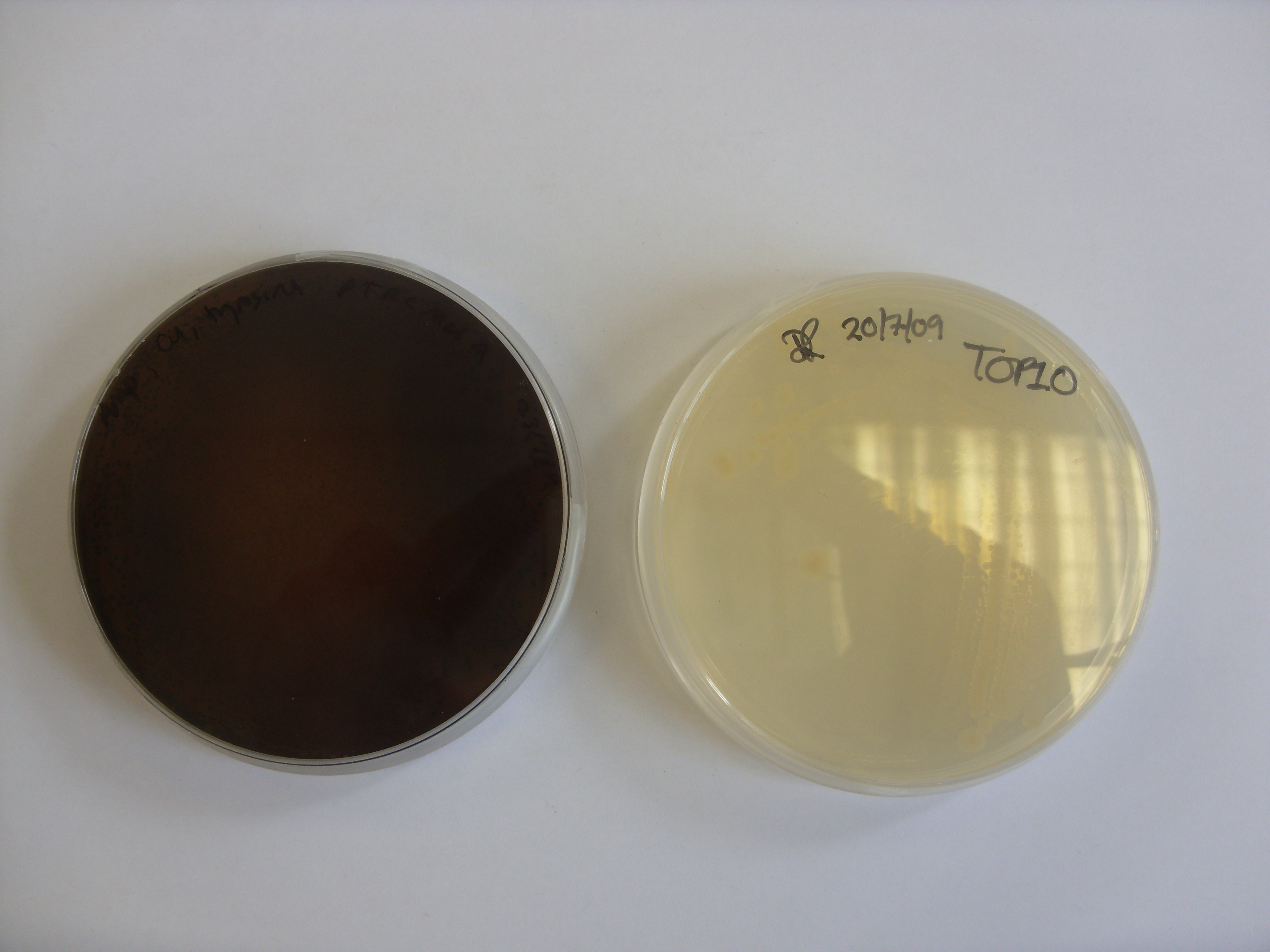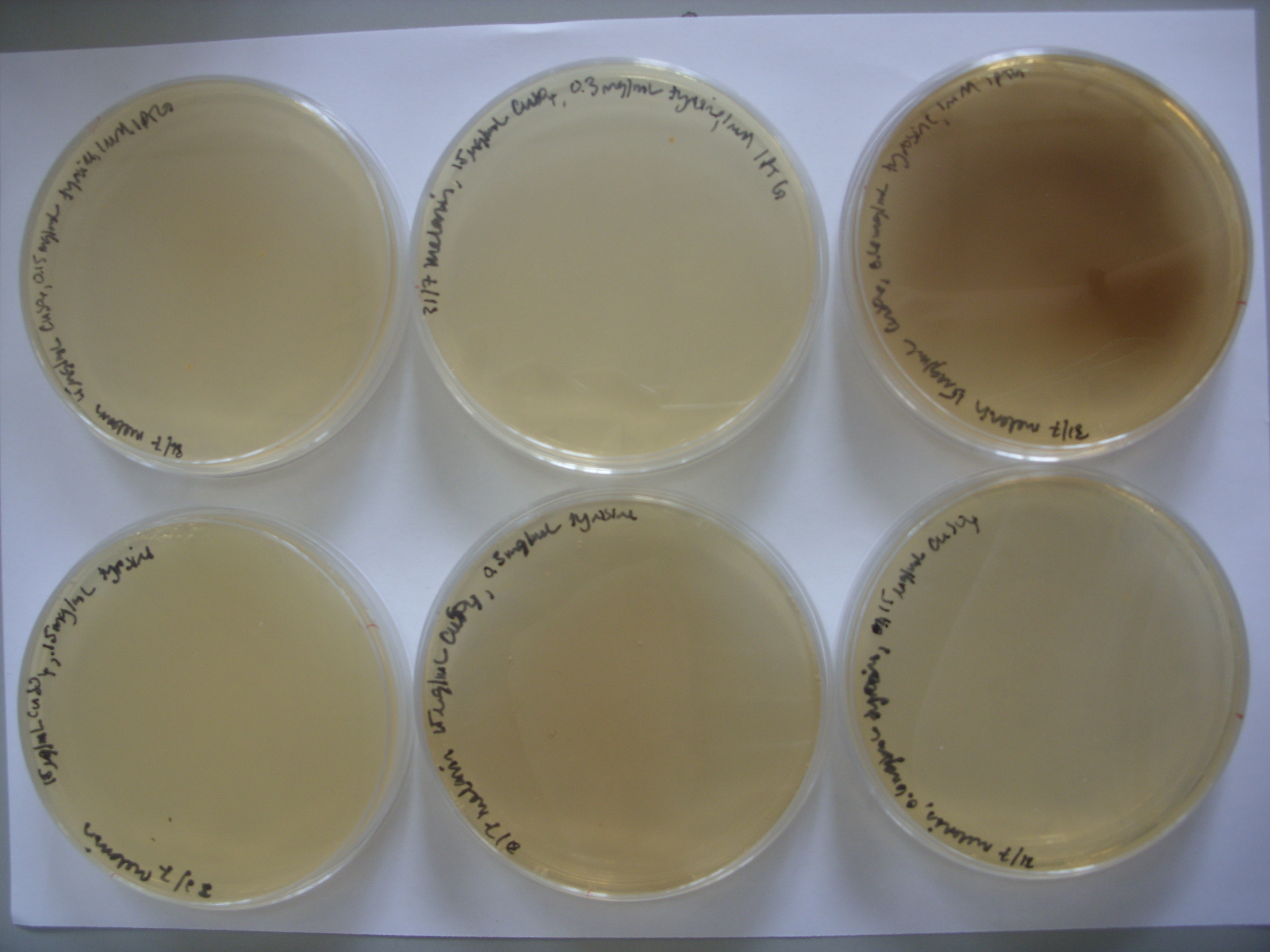Team:Cambridge/Project/ME03
From 2009.igem.org
(→Characterisation) |
MikeDavies (Talk | contribs) (→Melanin Pigment) |
||
| Line 4: | Line 4: | ||
<!-- This is for the top grey / blue links bar !--> | <!-- This is for the top grey / blue links bar !--> | ||
| - | {{Template: | + | {{Template:Cambridgetemplatetop2}} |
[https://2009.igem.org/Team:Cambridge/Project/ME01 Background] | [https://2009.igem.org/Team:Cambridge/Project/ME01 Background] | ||
[https://2009.igem.org/Team:Cambridge/Project/ME02 Design] | [https://2009.igem.org/Team:Cambridge/Project/ME02 Design] | ||
Latest revision as of 01:27, 22 October 2009
Categories :
Project :
-
Overview
Sensitivity Tuner
--- Characterisation
--- Modelling
Colour Generators
--- Carotenoids (Orange/Red)
--- Melanin (Brown)
--- Violacein (Purple/Green)
The Future
Safety
Notebook :
Team Logistics :
Melanin Pigment
Characterisation
Successful Pigment Production
In order to produce pigment, bacteria transformed with pTRCmelA must be plated on media supplemented with copper and tyrosine. Supplementation with copper is necessary as copper is a cofactor for the tyrosinase, and tyrosine is a precursor to melanin biosynthesis. (Cabrera-Valladares et al, (2006).
We transformed Top10 E. coli with pTRCmelA and plated them, using LA supplemented with 15ug/ml copper, 0.2ug/ul tyrosine. Below is a plate that was incubated at 37 degrees for 24 hours and then left on the bench at room temperature over the weekend. Pigment was clearly produced, and it appears to have diffused out of the colonies.
Left: Top10 transformed with plasmid containing the MelA gene. Right: untransformed Top10.
Control Experiments
To show that the brown colour was a result of the MelA gene and not natural oxidation of the LA supplements, a control plate without any bacteria was incubated for the same amount of time and showed no change in colour (data not shown).
Optimization
On pTRCmelA, the MelA gene is under the control of the lac repressor. The photo above shows leaky expression of the promoter, as no IPTG was not added. We then experimented with the addition of IPTG and varying tyrosine concentrations to see the effect on pigment production. As the photo below shows, the greatest pigment production was achieved with IPTG induction and the highest concentration of tyrosine.
From left to right, top row: 1mM IPTG with 0.075 mg/mL tyrosine, 1mM IPTG and 0.3 mg/mL tyrosine, and then 1mM IPTG and 0.6 mg/mL tyrosine From left to right, bottom row: 0.075 mg/mL tyrosine, 0.3 mg/mL tyrosine, and then 0.6 mg/mL tyrosine.
 "
"

